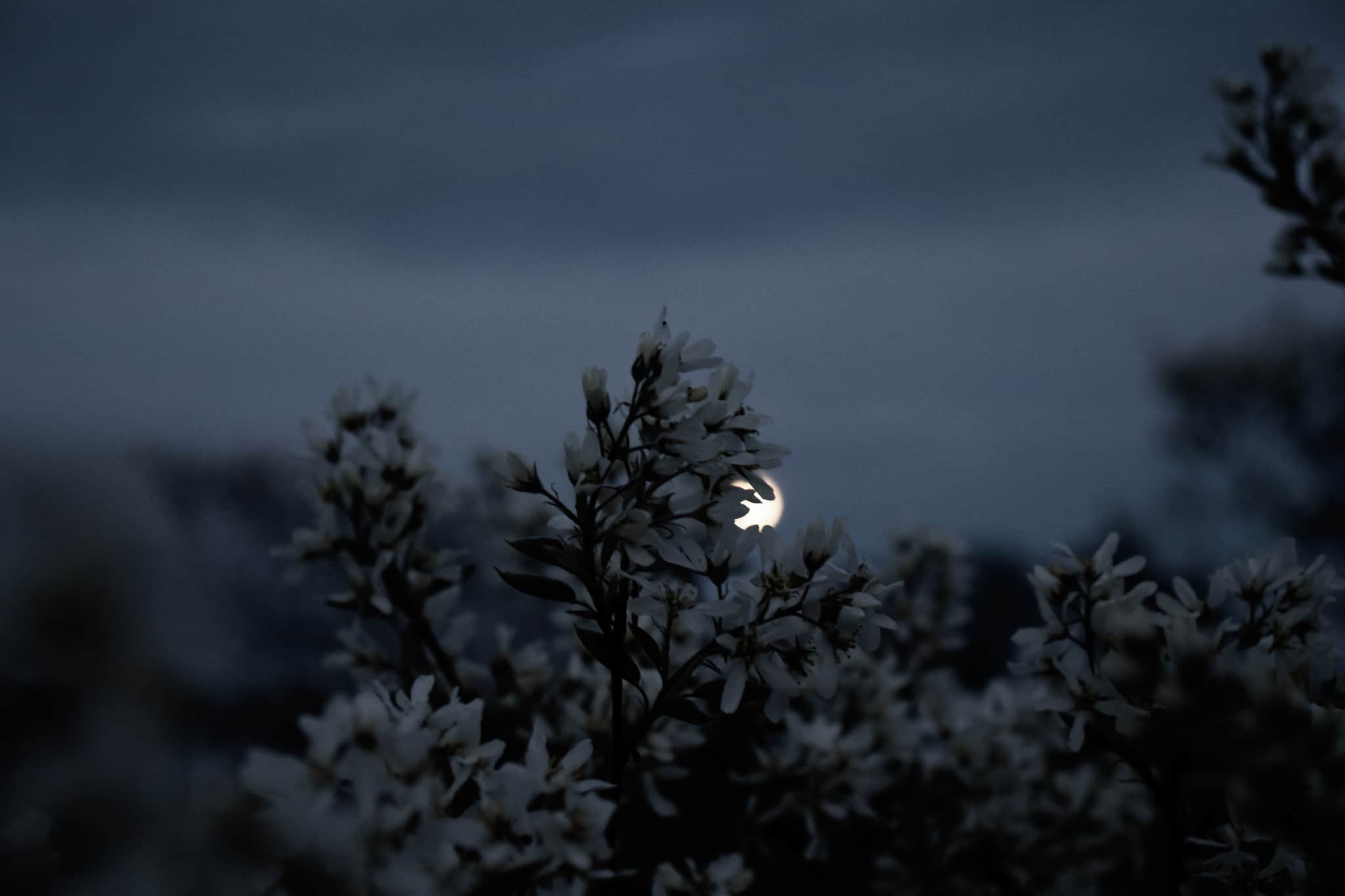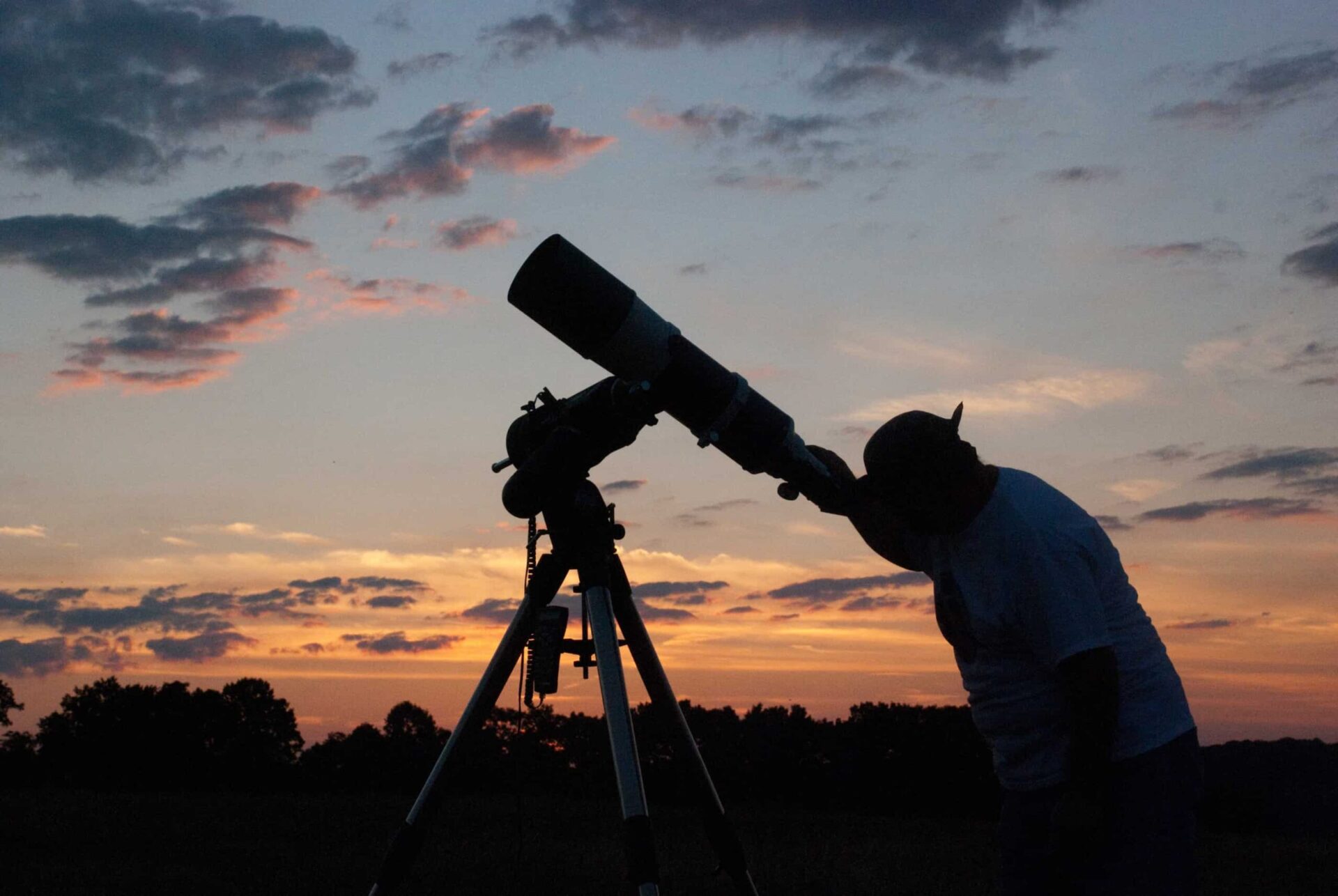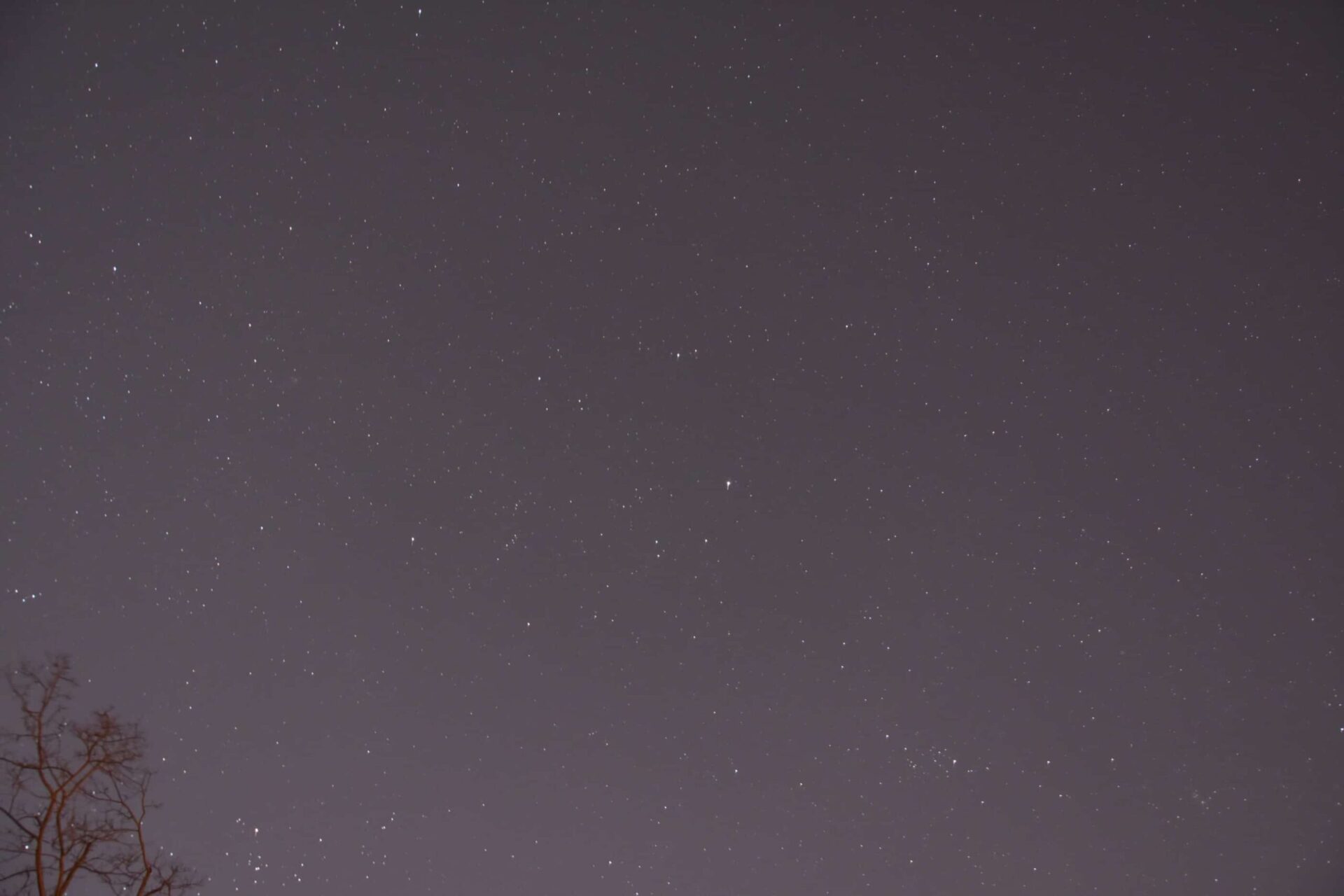How You Can Combat Light Pollution And Protect Our Nighttime Ecosystem
January 16, 2023
A dark sky shows a pinwheel galaxy and bright dots of stars, taken at Stroud Preserve
by Tianna Godsey.
Close your eyes. Total darkness. . .
Imagine for a moment a night sky without a single star. Blank space, an expanse of nothing, no assurance of life beyond our small atmosphere, our infinitesimal planet.
Many of us have grown up with the ability to stargaze, the ethereal experience of knowing we are so small compared to all that exists far beyond our gaze. But this is not the truth for everyone, especially city dwellers who lose more of the night sky each year due to light pollution.
The influence of light pollution affects our view of the night sky and has also begun to alter our nighttime ecosystem.
“Light pollution, the excessive or inappropriate use of outdoor artificial light, is affecting human health, wildlife behavior, and our ability to observe stars and other celestial objects,” states the National Geographic.
Mating, migrating, navigating, and finding food are just some of the life-sustaining behaviors of many species that are negatively affected by light pollution.
the ‘dark side’ of light
Artificial light at night affects circadian rhythms, the 24-hour internal clock that dictates physical, mental, and behavioral processes of most living creatures. The presence of light often leads to increased nocturnal activity by species that are conditioned to use light as a resource and/or information.
Nocturnal animals will feel the effects of light pollution most; the presence of artificial light will alter their behaviors significantly, meaning foxes, raccoons, bats, deer and nocturnal birds will begin to act differently in food-gathering and hunting as well as sleeping patterns. In Pennsylvania, our warm spring and summer nights are often filled with the trills of frogs and toads, their mating calls – but the presence of light will begin to deter this reproductive ritual.
The existence (or rather, lack thereof) of fireflies species is perhaps one of the most pronounced influences of light pollution. Without the dark cover of nighttime, fireflies neglect to use their bioluminescence which acts as both mating calls (with thousands of unique species and light-patterns), and a deterrent to predators.
muddled migration and pollination patterns
Turn on an outdoor light, and moths flock. This reduces their visits to night blooming flowers and plants which depend on moths for pollination.
This light attraction is reflected in other species, such as migrating birds.
Ever since urban areas lit up across the globe with artificial light, that light has altered the migration patterns and behaviors of many bird species. Birds find themselves thrown off course, attracted to the lights and losing valuable energy as they detour from their natural instinctive path. “Light itself doesn’t kill the birds, [but] it changes bird behavior,” says Susan Elbin, NYC Audubon.
For a long time, humans have feared the night. The darkness and the unknown. This is one of the reasons we have created an aura of light to protect us… but as we begin to experience and witness the harmful effects of artificial light and our ecosystem, perhaps our views of the dark will change. The night, after all, is full of life and productivity – a time when the wild comes alive to feed, nourish (pollinate), mate, and play. It’s our job to protect the night, and our stars.
Now, go back to imagining for a moment.
Imagine if all Natural Lands’ 42 properties were filled with buildings instead of open space—if Natural Lands was never born, and all 125,000 acres of land we have protected over the past nearly 70 years was developed—how bright the sky would be. How many stars we would lose sight of forever.
not-so-milky way
WeConserve PA hosted a seminar called ‘The Journey Back to the Stars’ this past August 2022 with Diane Turnshek and Michael Lincoln. The live webinar explored harmful effects of light pollution and what actions we can take as individuals to help make a difference
Diane Turnshek is a lecturer who runs the Astronomy Public Lecture Series at Allegheny Observatory. As she points out, many humans aren’t aware that the Milky Way is so inherently bright in the sky that it casts a shadow. Instead of the swirling galaxy many of us consider it to be, the Milky Way is a bright stream of stars banded together in the sky. But it’s true nature is altered by light pollution.
To experience the full vibrancy of the Milky Way, astronomers and enthusiasts must travel to destinations with as minimal light reflecting from Earth as possible, including Yosemite National Park and Death Valley, California.
Many such locations draw stargazers of all experiences and backgrounds each year (especially on a new moon when the sky is darkest).
dark sky as a natural resource
Dark sky advocacy has become a worldwide movement with a single mission: decrease light pollution to preserve the natural night sky. “A dark night sky is a natural resource, just like plants, waterways, and wildlife,” according to DCNR, which declared Cherry Spring State Park in Potter County as the first Dark Sky Park in Pennsylvania.
Dark Sky Parks provide a remote, wild place where stargazers can gather to enjoy near-total darkness and optimal views of the stars, Milky Way, planets and other astronomical sights.
Many Natural Lands preserves offer a unique open space. Though our properties are closed to the public at dusk, they provide oases of darkness for the many animals and insects that thrive there. Throughout the year, Natural Lands hosts special programs and events after-hours that allow visitors to experience the night sky (such as our annual music without walls Friday Night Lights, where local astronomy groups teach attendees stargazing tips and tricks).
The hope is that by spreading awareness of light pollution and its harmful effects, we might bring back the beauty of gazing up into a sky full of stars for generations to come. A nighttime with a robust ecosystem.
how we can bring back the starry skies
(what you can do…)
While Natural Lands properties and open space combats light pollution and its harmful effects on the nighttime ecosystem every day, there is more that can be done. Each one of us can make a difference, if we make a few dedicated changes in our daily habits; including:
- replace incandescent light bulbs with LED bulbs (LED bulbs can be dimmed, and narrow-spectrum amber LEDs are preferred)
- use lights with a red or yellow tint (limiting blue light emissions)
- modify outdoor lights so they are shielded (hooded) and facing in the direction they’re needed
- install a motion sensor so lights are only on when needed (and/or turn off unnecessary outdoor lighting when possible)
- promote less usage of light in your townships, cities, neighborhoods, and counties (there are certified “International Dark Sky communities” that follow guidelines and enact ordinances to provide efficient, nonintrusive lighting)
- and, make our voices heard (advocate!).
These ideas and more are shared by the International Dark Sky Association, which promotes the initiative of individuals to enact conscious light habits and make adjustments that will benefit our world and wildlife.
Light pollution is one of many problems we face as the next generation, but it is a very real issue that affects larger issues such as climate change. The heat produced from light may seem minimal but when combined, it is heating the planet at an alarming rate and contributing to the overall rise in climate.
There are also community groups and citizen scientists who are passionate about mitigating the effects of light pollution. If you are interested, consider reaching out to your local community to see what is available and active.
Together, we can preserve dark skies, our stars, nocturnal wildlife, and ourselves.
next post
On Humility
January 13, 2023
By Daniel Barringer, Preserve Manager. We like to think of ourselves as experts, and that we’re pretty good at what we do. But I am […]
continue reading


